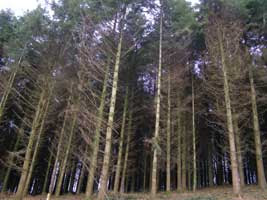Nanosilver kills the microbes that produce nasty smells and it is now widely used in t-shirts, socks and many types of sports clothes. But when these high-tech outfits go in the washing machine, the nanosilver is washed out and ends up in our rivers.
So a team led by Charles Tyler at the University of Exeter have done some research to see what that means to fish, which are usually rather sensitive to silver...
Working with rainbow trout, the team exposed the fish to water enriched with different sizes of nanosilver. The idea was to see if the silver would find its way into the trout and where the tiny particles were more likely to accumulate.
After ten days of exposure Tyler and the team analysed the fish, looking for damage to the cells or to the genes that control essential cell processes.
What they discovered is good news: 'Despite much recent concern around nanoparticle pollution, we found that the fish took up nanosilver in only very small amounts,' says Tyler.
That's encouraging. But note the caveats...
Tyler and his team had the particles they used carefully characterised: 'we knew exactly what we were exposing our fish to,' he says. Other studies exposing fish to slightly different nanosilver particles might yield different results.
Nanoparticles are going to be so useful you can see why industry and scientists can't resist them. But nanoparticle toxicity is still barely understood.
This story came from Planet Earth Online - produced by the Natural Environment Research Council.







